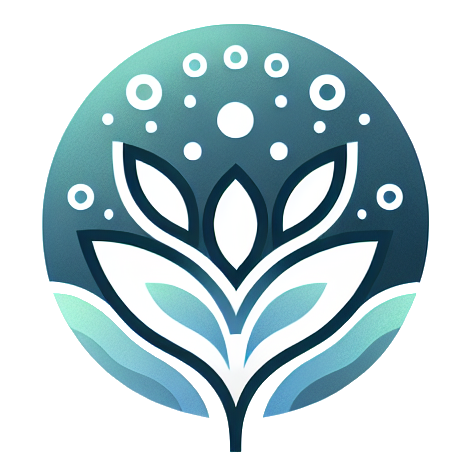In our fast-paced world, where productivity often reigns supreme, the idea of doing nothing can feel counterintuitive, even guilty. Yet, the act of embracing true rest can be one of the most powerful tools we have for enhancing our physical health, mental well-being, and overall quality of life. Taking a step back and allowing ourselves the space to simply be can lead to profound benefits, both in the short and long term.
The Myth of Constant Productivity
Many of us have been conditioned to equate busyness with value. We wear our packed schedules like badges of honor, often sacrificing our well-being in pursuit of achievement. However, research indicates that this relentless drive can lead to burnout, anxiety, and even physical health issues.
When we push ourselves to the limit, we often miss out on the benefits that come from stepping back. True rest is not merely the absence of activity; it is a conscious choice to engage in restorative practices that recharge our energy and creativity. Embracing stillness can lead to clarity and rejuvenation, allowing us to return to our tasks with renewed focus and enthusiasm.
The Science Behind Rest
The benefits of taking time for rest are well-documented in scientific literature. Studies show that our brains require downtime to process information, consolidate memories, and foster creativity. When we engage in restful activities, such as meditation, nature walks, or simply sitting in silence, we trigger the body’s repair mechanisms.
One fascinating study published in the journal “Nature” suggests that allowing our minds to wander can enhance problem-solving abilities. When we step away from constant stimulation, we create space for innovative ideas to flourish. This insight underscores the importance of incorporating intentional downtime into our daily routines.
Finding Balance in a Hectic Life
For many, the challenge lies in finding the right balance between productivity and rest. The good news is that embracing true rest doesn’t require significant time commitments. It can be woven into the fabric of our daily lives through small, intentional practices.
Start by carving out a few moments each day dedicated solely to yourself—no phones, no distractions, just you. This could be as simple as enjoying a cup of tea in silence, journaling your thoughts, or practicing mindfulness. These moments can serve as anchors, helping you cultivate a sense of calm amid the chaos.
The Art of Mindfulness
Mindfulness is a powerful tool for embracing true rest. By focusing on the present moment, we can learn to appreciate the beauty of doing nothing. Mindfulness practices, such as meditation or yoga, encourage us to slow down and connect with our bodies. As we become more attuned to our physical sensations and emotions, we can better recognize when we need to pause and recharge.
Incorporating mindfulness into your daily routine can take many forms. Whether it’s taking a few deep breaths before a meeting, savoring the taste of your food, or practicing gratitude, these small acts can dramatically shift your perspective and enhance your overall well-being.
The Benefits of Doing Nothing
The benefits of taking time to do nothing extend far beyond mere relaxation. Research suggests that engaging in restorative practices can lead to improved mental clarity, enhanced creativity, and even better physical health. Here are just a few of the remarkable benefits you can expect when you embrace true rest:
Reduced Stress: Taking time to rest decreases cortisol levels, the hormone associated with stress. A calmer mind can improve your emotional resilience and overall outlook on life.
Enhanced Focus: Regular breaks improve concentration and productivity. When you allow your mind to rest, it becomes easier to engage with tasks and maintain focus.
Increased Creativity: Some of the best ideas often come during moments of rest. Allowing your mind to wander can spark innovative thinking and problem-solving abilities.
Improved Physical Health: Chronic stress can lead to various health issues, including hypertension and heart disease. Prioritizing rest can improve your physical health by reducing the strain on your body.
Creating Your Restful Sanctuary
To truly embrace doing nothing, it can be helpful to create an environment that promotes relaxation. Designate a space in your home that is free from distractions and noise—a sanctuary where you can unwind and recharge. This could be a cozy corner filled with pillows, a hammock in your garden, or even a tranquil spot in your local park.
Consider incorporating calming elements into your sanctuary, such as soft lighting, soothing scents, or gentle music. Surrounding yourself with items that evoke peace and tranquility can enhance your ability to let go and embrace stillness.
Embracing the Journey
As you begin to incorporate more rest into your life, remember that this is a journey, not a destination. It’s normal to feel uncomfortable at first; doing nothing can feel foreign, especially in a world that glorifies busyness. However, with practice, you will likely find that these moments of stillness become essential to your well-being.
"Sometimes the most productive thing you can do is relax."
In a culture that prizes productivity above all else, embracing the power of doing nothing can be a radical act of self-care. By recognizing the importance of true rest and intentionally incorporating it into our lives, we can enhance our health, creativity, and overall happiness.
So, take a deep breath, slow down, and allow yourself the gift of doing nothing. It may just be the most rewarding thing you ever do. Remember, you are not just a human doing; you are a human being, deserving of rest, rejuvenation, and joy.
